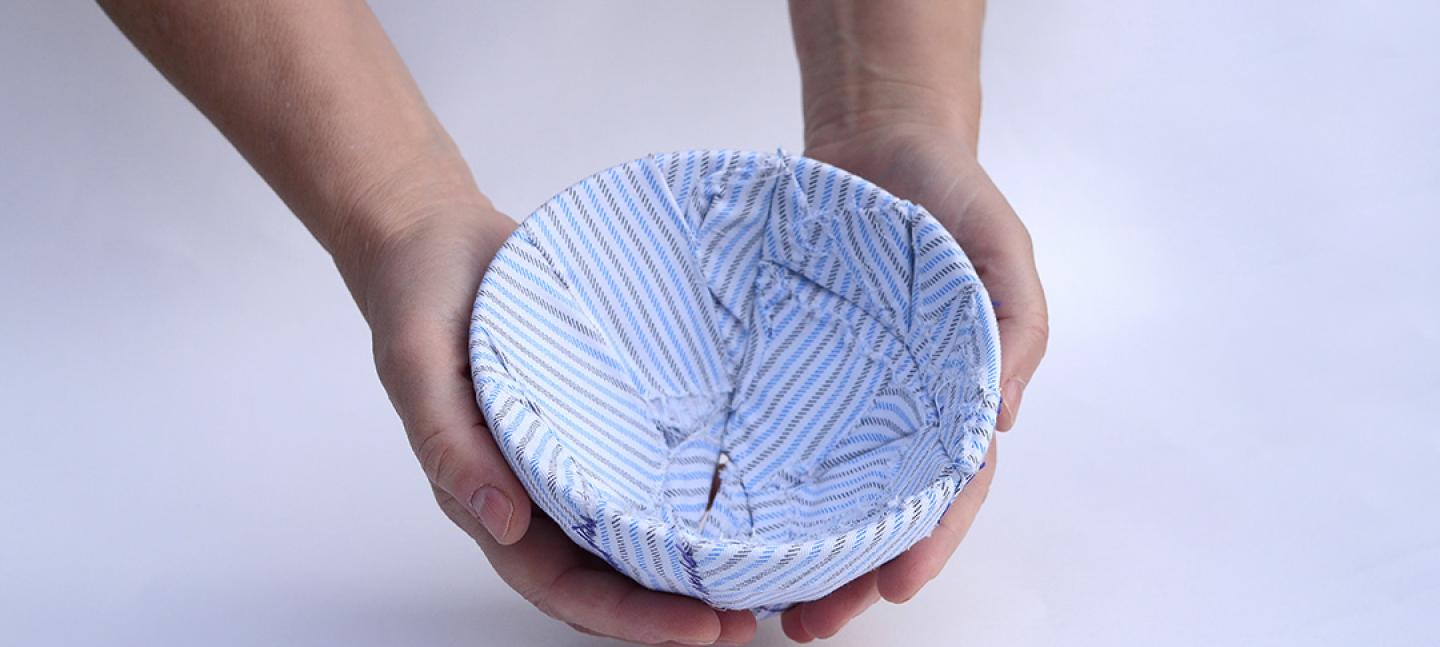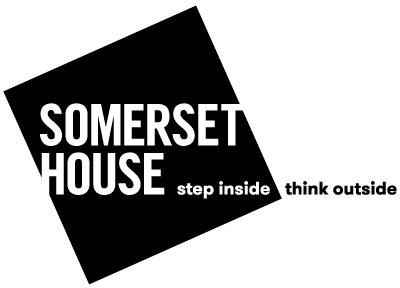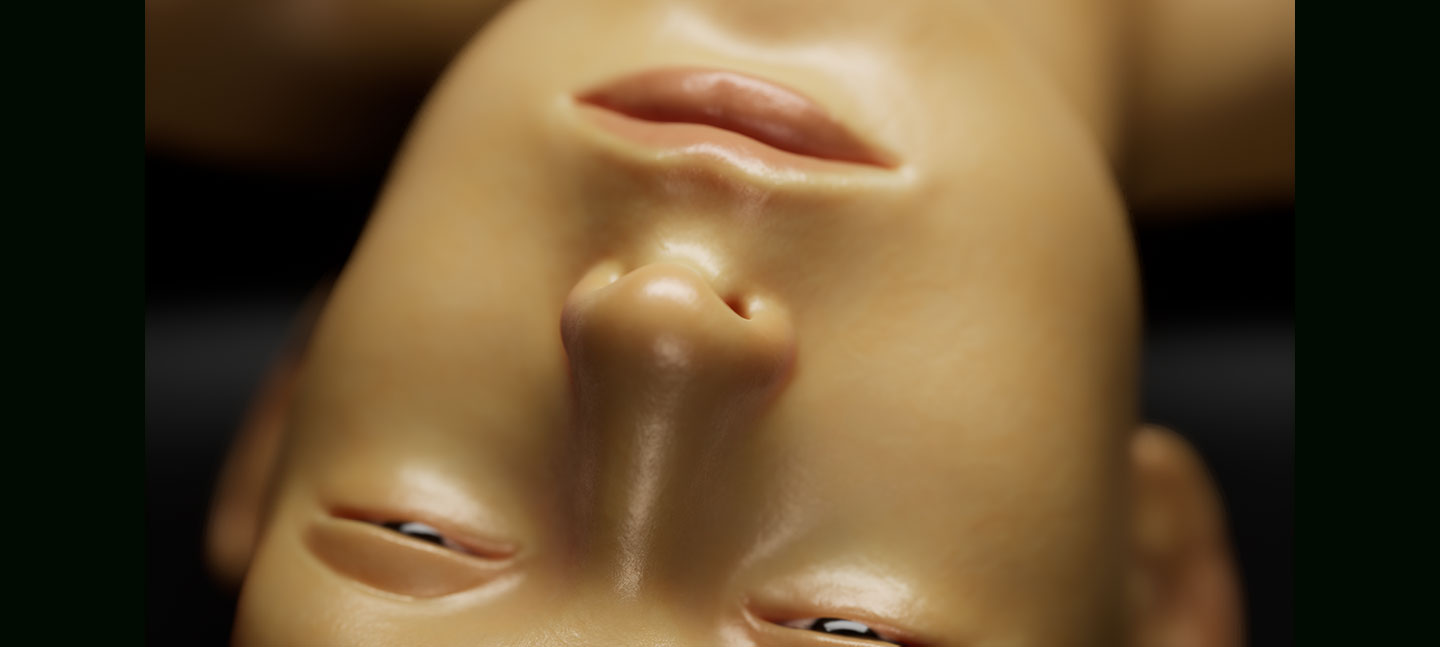
FREE
An Exhibition about Care, Repair and Healing
This summer, Somerset House presents Eternally Yours, a free exhibition exploring ideas around care, repair and healing. Staged across the three Terrace Rooms, Eternally Yours showcases diverse examples of creative reuse, from historical artefacts that embraced upcycling and repurposing, to recent work from leading artists and designers that have repair at the heart of their practice. This timely exhibition invites visitors to appreciate the worn and aged, uncovering the history and emotional value of the items we hold on to, rather than discard. It takes the idea of ‘repair’ as a philosophy and a provocation, inviting us to reconsider our way of life and relationship to the planet, and everything that surrounds us. Highlights include:
- Engaging works from artists and designers including transformative visible repair from a jumper from Annemor Sundbø’s ragpile collection by Celia Pym, stories of survival sewn into the soles of the shoes of Syrian migrants by Aya Haidar, transformations of items salvaged in the aftermath of Japan’s devasting 2011 earthquake and tsunami by Aono Fumiaki and photography from the celebrated Making Do and Getting By project by Richard Wentworth
- Looking ahead to the future of design and repair with artists and activists Superflux, Bridget Harvey and Tenant of Culture
- Further highlights from artists and designers including Linda Brothwell, Ellen Sampson, Georgina Maxim, muf architecture/art, Yuko Edwards, Teresa Dillon and Maiko Tsutsumi
- At the heart of the exhibition, ‘The Beasley Brothers’ Repair Shop', a pop-up created by designer Carl Clerkin and modelled on traditional East End repair shops of old, hosts live workshops and demonstrations from artists and designers including Peter Marigold, Gitta Gschwendtner, Jasleen Kaur, Poppy Booth, Fiona Davidson, Michael Marriott, Alex Hellum and Jon Harrison
- Series of artist-led workshops and free mending consultations led by lifestyle brand TOAST
- Special Morgan Stanley Lates event on 22 June to celebrate the opening of Eternally Yours, offering after-hours access and free exclusive experiences, including transforming time with artist Abigail Conway in the spectacular surrounds of Somerset House’s courtyard
Eternally Yours unpacks how ‘repair’ can guide both our individual and collective healing through revealing unexpectedly hopeful - and helpful- stories of repair and reuse. The exhibition is very timely for both people and the planet, as we face the dual dislocating experiences of a global pandemic and climate crisis. Contributing to a growing awareness that disposable products are damaging the world around us, people are increasingly looking for more sustainable ways of living. With the new ‘right to repair’ legislation implemented by the UK government in summer 2021, this exhibition asks what this might mean for the design and maintenance of our possessions. Furthermore, the show gives visitors a chance to consider the sense of calm and comfort they find in the objects they treasure at the most uncertain of times. Moving beyond the monetary value of objects to explore their emotional meaning, Eternally Yours seeks to spotlight the worth in the seemingly worthless.
The exhibition begins with a celebration of artistic expressions of repair, care and healing. Upon entering the show, visitors will discover historical and contemporary objects which showcase traditional methods and values of repair. These items embrace the beauty of upcycling and repurposing, from a Gee’s Bend Quilt ( Black American folk-art textiles created by generations of women and unique to the tiny rural hamlet where they’re produced) to examples of the Japanese arts of Boro (the visible mending of garments using patchwork and stitching) and Kintsugi (repairing broken pottery with precious materials such as gold).
Alongside these historical objects, works from contemporary artists and designers will feature, showcasing the ways in which repair can be used to preserve and give meaning to objects of personal significance or cultural importance. Highlights include the intricate stitch work of textile artists such as Celia Pym, whose delicate restoration transformed a severely damaged hand knitted jumper from the ragpile collection of Annemor Sundbø, the traditional weaver working to keep the cultural traditions of Norwegian knitting alive, with contrasting wool darning using visible mending techniques.
Also exploring the power of preserving and continuing an object’s story, artist and potter Edmund de Waal invited Japanese artist and Kintsugi specialist Maiko Tsutsumi to work with him on a group of 18 Meissen porcelain plates, some in fragments, that he had acquired at an auction in 2011. The plates, which were once owned by, and stolen from, the Jewish von Klemperer family during the Second World War, became damaged during the 1945 bombing of Dresden. In De Waal’s own words, the act of threading golden lines across the fractured plates is a poignant reminder of the object’s story and its losses.
Angela Maddock presents Holding: A Work in Progress, an on-going project utilising perineal surgical stitching methods and textile scraps from nurses’ uniforms to repair broken vessels into works of art. Zimbabwean artist Georgina Maxim also recycles clothing in her work, in her case belonging to close relatives and friends, to create gigantic textile stories of memory and healing.
American multi-disciplinary artist Yuko Edwards’ on-going project On Skin will also be on display. On Skin was first presented at community hub St Anne’s House in Bristol, where visitors were invited to stitch their own stories of wounds, scars and markings to a skeleton wall-hanging produced by the artist. The project, which seeks to spark conversation around what it takes to heal, explores the process of putting ourselves back together again. The piece will be accompanied by a film, where contributors discuss the stories behind their scars and what they mean to them.
New works commissioned for Eternally Yours from British-Lebanese multimedia artist Aya Haidar’s Soleless Series will also be displayed. Developed during a four-month artist residency programme working directly to reintegrate newly arrived Syrian refugee communities into the UK, Haidar embroidered first-hand accounts of migrants' journeys upon the soles of their worn-out shoes to evoke themes of loss, migration and memory.
Visitors will have the chance to view a selection of photographs taken by influential artist, curator and teacher, Richard Wentworth. The images chosen for the exhibition, depicting ingenious examples of repair, are taken from Wentworth’s on-going project Making Do and Getting By. Beginning in the 1970s, the project records the artist’s encounters with the extraordinary use of ordinarily mundane objects in the modern world.
Meanwhile, artist, writer and curator Ellen Sampson looks at the ways in which material objects can become records of the body in lived experience. Using photographs of her project Cloth, Sampson highlights the beauty of imperfect garments, and the power creases, crumples and stains can hold as evidence of lives lived and journeys taken. Photographs from Repair Acts, a project that explores the histories and heritages of repair culture across the UK, Brazil, India and Ireland, will also feature. Founded by artist and researcher Teresa Dillon, the photographic portraits of professional repairers will be accompanied by extracts from first-hand stories of their lives and practice.
In a series of sculptures by Japanese artist Aono Fumiaki, a project he began from his home in Sendai after it was devasted by the 2011 Tōhoku earthquake and tsunami, Fumiaki combines found objects collected from the wreckage with wood carving and painting, conserving the history of the objects from the past in an act of transformative repair. British artist Linda Brothwell brings her work Acts of Care: The Sheffield Edition to Eternally Yours, which uses the traditions and techniques of Sheffield’s steel-making industry to sculpturally repair broken brickwork with handmade tools. The exhibition will play host to Studio Propolis, a workshop-led design practice based in Nairobi, whose at home repair kits are inspired by Jua Kali, the culture of customisation and repair that exists in Kenya. The restoration of the much-loved Brixton Recreation Centre by renowned collaborative practice of artists, architects and urban designers, muf architecture/art, will also be spotlighted. Visitors will be able to view the ‘small acts of repair’ conducted during the restoration that celebrate the original design intent whilst reviving previously unused spaces.
Visitors will have the chance to explore what repair means to them first-hand, with live demonstrations and workshops in the installation at the heart of the exhibition, the Beasley Brothers’ Repair Shop. The brainchild of designer Carl Clerkin, the installation is modelled on traditional East End repair shops of old, that could - and would - repair anything. A host of artists and designers, including Gitta Gschwendtner, Jasleen Kaur, Poppy Booth, Fiona Davidson, Michael Marriott, Alex Hellum and Jon Harrison, will join Clerkin in the repair shop throughout the exhibition’s run, transforming discarded objects into something not only useful but beautiful. Designer Peter Marigold will show visitors the potential of Formcard, the mouldable, reusable bioplastics he created to fix broken objects and create useful everyday tools.
Moving through the exhibition, visitors are invited to look towards a hopeful future, and ask what lessons we might learn from ideas of care and repair to heal both ourselves and our planet. Boundary-defying, award-winning design company and Somerset House Studios resident, Superflux, present a collection of speculative futuristic design ‘artefacts,’ inspired by their experimental film The Intersection, which explores a societal reckoning with technology in the near future. British artist Bridget Harvey, who uses found objects and crafting techniques to demonstrate the transformative art of restoration, will explore the connection between activism and repair. She’ll be joined by Tenant of Culture, the artistic practice of Hendrickje Schimmel, who works to repurpose discarded materials to create unexpected sculptural forms, that offer a critique on consumer culture and wastefulness. Graphic designer Indiana Lawrence provides the visual backdrop to Eternally Yours with her eye-catching 2D design.
Events Programme
Eternally Yours will be accompanied by a series of events exploring the concept of repair, led by lifestyle brand TOAST. In the workshop space in the Courtyard Rooms, adjacent to the exhibition, TOAST will present a display from textile artists who have repurposed TOAST materials, exploring different repair techniques. Alongside this, there will be a series of workshops and mending consultations with artists including Bridget Harvey, Molly Martin, and Ekta Kaul. All proceeds from ticket sales will be donated to the Somerset House Young Talent Fund. This provides bursaries and financial relief to artists, as well as opportunities for under-represented people aged 18-25 seeking to get into the creative sector.
To celebrate the opening of Eternally Yours, Somerset House will present a special Lates event on 22 June, offering after-hours access and exclusive experiences taking inspiration from the themes of the exhibition.
Morgan Stanley Lates at Somerset House with The Courtauld brings artist Abigail Conway’s playful, participatory live art piece – Time Lab – to London for the very first time, staged in the spectacular surrounds of Somerset House’s courtyard, having been held around the UK, Asia and Australasia.
Described as an “extraordinary experience” by The Scotsman, Lates audiences will be invited to discover the joy of upcycling by transforming their own unused or broken timepieces. Starting with a bang by taking a hammer to old wristwatches, attendees can then use their dismantled parts to create something completely new and unique – a ring, a brooch, a pendant, a decorative sculpture or something else entirely – with Conway and the Time Lab team on hand to help. Each maker and their transformation will be photographed to be presented in the Time Lab archive before being theirs to take away and enjoy at the end.
For the Lates event on 22 June the courtyard will also have a set from West London DJ and radio presenter Scarlett O’Malley. The Natural Bar Company and Toast Beer, who use salvaged waste ingredients including banana peel and bread crusts to make their drinks, will offer refreshments, whilst ethical plant-based ice cream from Mamma Dolce will also available throughout the evening
The Courtauld Gallery – set within Somerset House’s North Wing – will remain open for after-hours access too, including The Morgan Stanley Exhibition: Edvard Munch. Masterpieces from Bergen. Following the theme of repair and renovation, The Courtauld’s expert team will provide pop-up talks and special demonstrations on the art of conservation, unveiling the tools they use to keep the paintings in the Gallery’s permanent collection looking so vibrant, as if the artists had just finished their last brushstrokes.
NOTES TO EDITORS
For Press Enquiries, Please Contact: press@somersethouse.org.uk / 0207 845 4624
Dates: 16 June - 25 September 2022
Tickets: FREE
ABOUT SOMERSET HOUSE
London’s working arts centre
Somerset House is London’s working arts centre and home to the UK’s largest creative community. Built on historic foundations, we are situated in the very heart of the capital.
Dedicated to backing progress, championing openness, nurturing creativity and empowering ideas, our cultural programme is ambitious in scope. We insist on relevance, but aren’t afraid of irreverence, and are as keen on entertainment as enrichment. We embrace the biggest issues of our times and are committed to oxygenating new work by emerging artists. Where else can you spend an hour ice-skating while listening to a specially commissioned sound piece by a cutting-edge artist?
It is this creative tension—the way we harness our heritage, put the too-often overlooked on our central stage and use our neo-classical backdrop to showcase ground-breaking contemporary culture—that inspires our programme. Old and new, history and disruption, art and entertainment, high-tech and homemade, combined with the fact that we are home to a constantly shape-shifting working creative community: this is our point of difference. It is what we are proud of. And it is what makes the experience of visiting or working in Somerset House inspiring and energizing, urgent and exciting.
ABOUT TOAST
TOAST began in 1997 with a small collection of loungewear and nightwear, designed in a farmhouse in Wales. Today, TOAST creates modern, simple clothing and functional, thoughtful pieces for the home. The womenswear, menswear and homeware collections reflect a sense of ease and a slower, more thoughtful way of life. At the heart of TOAST is a commitment to supporting traditional textile techniques, craftsmanship and creating timeless pieces in quality fabrics to ensure they last.



